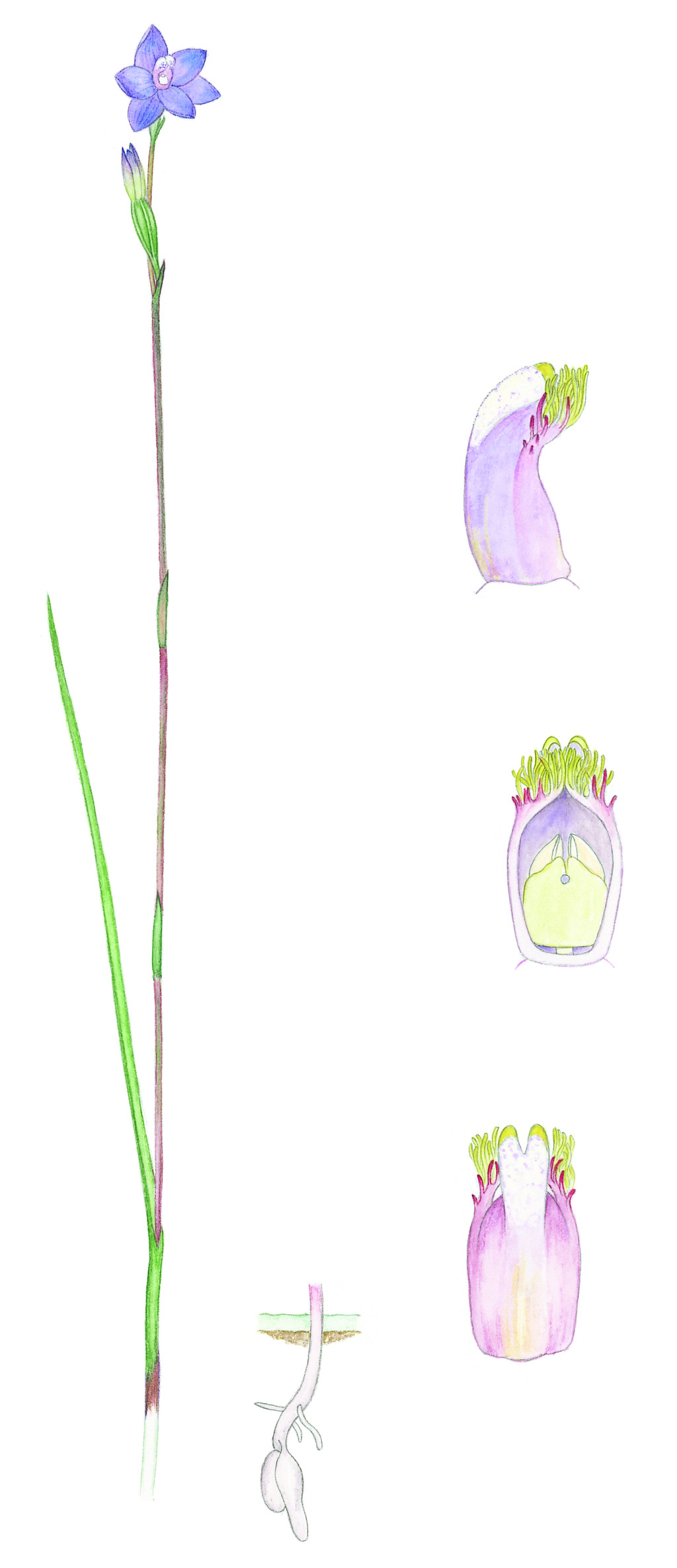Thelymitra mucida
W.Fitzg. Plum-orchidFlowering stem erect, straight, 18–55 cm tall, 0.8–2 mm diam., green to purplish. Leaf linear, attenuate, 10–30 cm long, 2–8 mm wide, fleshy, canaliculate, ribbed abaxially, sheathing at base, dark green with a purplish base. Inflorescence 1–6-flowered, open. Sterile bracts usually 2, rarely 3. Perianth segments lanceolate to ovate, 6–12 mm long, pale to deep blue or purplish often with pink tones. Column slender, 4–6 mm long, blue or pinkish; mid-lobe expanded into hood over the anther, tubular, inflated, narrow at the base, widening abruptly towards the apex, curved, purplish brown covered with a thick, sticky, hoary secretion, apex deeply v-notched, yellow; lateral lobes converging or more or less parallel, (1–)1.5–2 mm long, digitiform or laterally compressed, porrect or obliquely erect, each with a sparse shaggy toothbrush-like arrangement of cream or yellow hairs embracing the mid-lobe. Anther inserted towards base of column, shortly beaked. Flowers Aug.–Dec.
Wim, GleP, VVP, GipP, OtP, GGr, DunT, WPro. Also WA, SA, Tas. Scattered across southern Victoria, on coastal plains, lowlands and nearby hills in high-rainfall areas. Grows in heavy loams or clays, preferring inundated boggy places to dry ridges. Flowers Sep.-Dec., mainly Nov. Grows in moist depressions and around swamp margins, under dense scrubland, heathy woodland or heathland on peaty sand that remains moist for most of the year.
Flowers are self-pollinating and only open on warm, humid days.
Thelymitra orientalis is similar to T. mucida, but the former is a generally less robust plant with a filiform leaf, usually only 1 flower and little or no bloom on the mid-lobe of the column.
Weber, J.Z.; Entwisle, T.J. (1994). Thelymitra. In: Walsh, N.G.; Entwisle, T.J., Flora of Victoria Vol. 2, Ferns and Allied Plants, Conifers and Monocotyledons, pp. 840–854. Inkata Press, Melbourne.
 Spinning
Spinning


